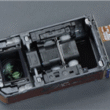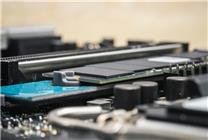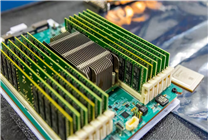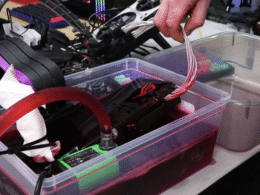The Dominance of SSDs Over HDDs in the AI Era: An Editorial Perspective
In the evolving landscape of data storage, technology shifts rapidly. As of September 21, it’s clear that Solid-State Drives (SSDs) are surpassing Hard Disk Drives (HDDs) as the preferred storage solution, especially in the artificial intelligence (AI) realm. This article explores the compelling advantages of SSDs in meeting modern data demands.
Key Points:
- Performance Needs: AI workloads require high throughput, low latency, and energy efficiency.
- Reliability: SSDs outperform HDDs in longevity and operational stability, ensuring minimal downtime.
- Future Trends: SSD capacities are on track to soar, widening the gap with HDDs.
The Changing Landscape of Data Storage
Historically, HDDs were favored for their large storage capacities, particularly in data centers. However, as we transition into the AI era, the demands for data storage systems have evolved. Modern applications require more than large capacities; they necessitate high performance and efficiency in handling vast data sets.
The Four Pillars of AI Storage Needs
-
High Throughput: AI workloads often entail access to massive data sets that traditional HDDs cannot handle efficiently.
-
Low Latency: The need for quick interactions between storage and Graphics Processing Units (GPUs) is paramount for AI computations. SSDs provide significantly faster access times compared to HDDs.
-
Scalable Capacity: As AI models increase in complexity and data sets grow larger, flexible scalability is essential. SSDs are designed to accommodate this growth more effectively than HDDs.
- Energy Efficiency: With the rise of power-intensive AI clusters, controlling energy costs becomes crucial. SSDs consume less power per terabyte than their HDD counterparts, making them a more sustainable choice.
Performance Comparison: SSDs vs. HDDs
While a 24TB HDD might seem substantial, SSDs are already reaching capacities of up to 128TB. The performance metrics further illustrate the gap: an SSD can achieve speeds of 1GB/s per TB, with some configurations reaching up to 3GB/s. In contrast, HDDs are 5 to 10 times slower in comparison.
Reliability and Operational Stability
Reliability has traditionally been a selling point for HDDs, but SSDs have significantly closed this gap. Modern enterprise-grade SSDs boast longer lifespans and 10-year warranties, ensuring efficient operation until they are physically exhausted.
Moreover, operational stability plays a crucial role in the overall reliability of data storage systems. In the event of failure, HDDs require several days for rebuilding arrays, leading to extended downtimes. SSDs, on the other hand, facilitate faster reconstruction times, reducing operational interruptions.
The Future is SSD
Looking ahead, the trend is clear: the capacity of SSDs will continue to grow. Estimates suggest that by the next two to three years, SSD capacities could reach 256TB and even 512TB, further widening the performance divide with HDDs. Meanwhile, industry leaders like Seagate and Western Digital anticipate launching a 100TB HDD by 2030, but this may still be insufficient given the rapid advancements within SSD technology.
Conclusion
The momentum behind SSDs in the AI era is undeniable. Their superior speed, reliability, and energy efficiency position them as the go-to choice for modern storage solutions. As industries increasingly rely on artificial intelligence and data-driven technologies, the shift away from HDDs toward SSDs is poised to become more pronounced.
Investing in SSD technology not only meets the immediate demands of AI workloads but also aligns with future advancements in data storage, ensuring organizations remain competitive in a rapidly evolving landscape. Embracing SSDs is no longer a luxury but a necessity for those aiming to thrive in the digital age.
By focusing on the evolving demands of AI and the inherent advantages offered by SSDs, businesses can position themselves to maximize their data storage capabilities, ensuring they are prepared for the challenges of tomorrow.









